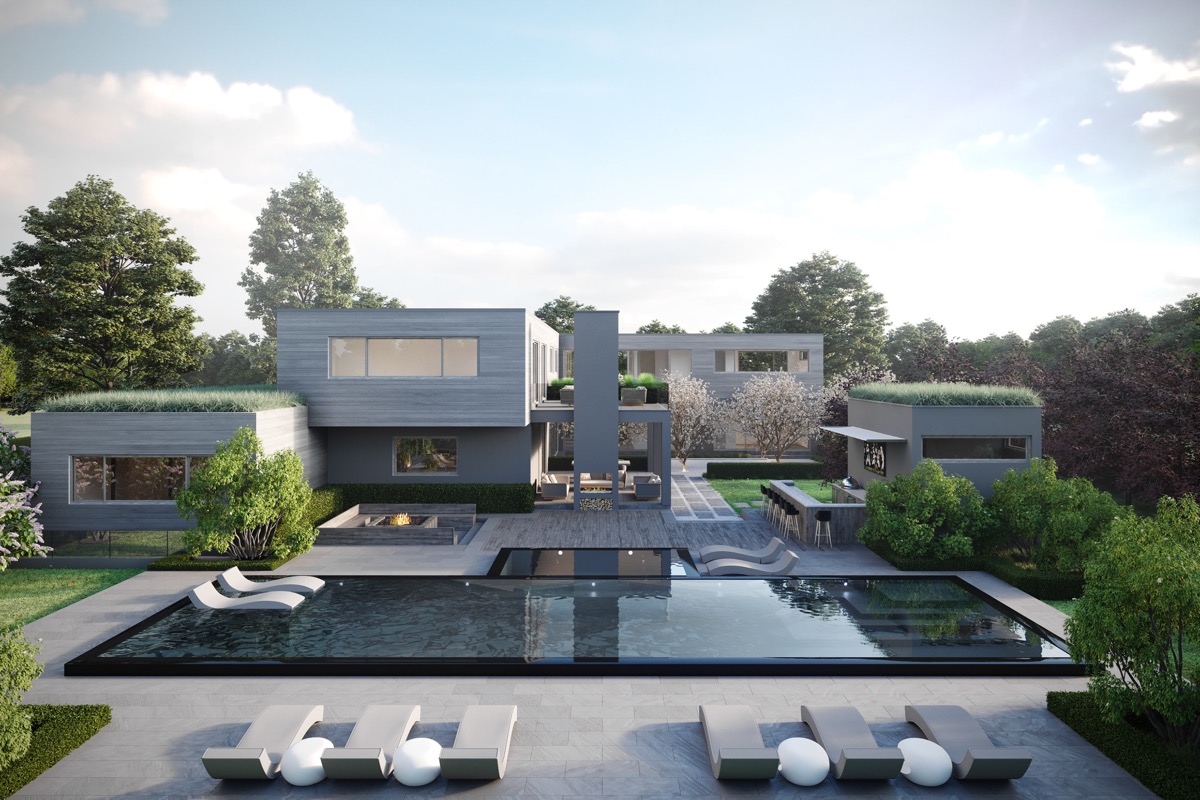Residential architecture has always reflected human needs, cultural influences, and technological advancements. Over the centuries, how we design and construct our homes has evolved significantly. From ancient dwellings to modern marvels, residential architecture tells a story of humankind’s ever-changing desires and aspirations. In this article, we will explore the evolution of residential architecture, comparing the old and the new and understanding how each era has left its mark on our lives.
The Old: Traditional Residential Architecture
Traditional residential architecture encompasses diverse styles that have prevailed throughout history. These architectural styles are deeply rooted in cultural and regional contexts, representing different societies’ unique characteristics and values. Traditional residential architecture has stood the test of time, whether it’s the timeless elegance of Classical architecture or the rustic charm of vernacular designs.
One of the distinguishing features of traditional residential architecture is its emphasis on craftsmanship and detailing. Hand-carved ornaments, intricate mouldings, and decorative motifs are prevalent in conventional homes, reflecting the skill and artistry of the artisans. Traditional architecture also values symmetry and proportion, creating a sense of harmony and balance in the design. Traditional architectural styles include Greek Revival, Victorian, Colonial, and Tudor, each with distinct characteristics and historical influences.
Traditional homes are often characterized by their use of natural and locally sourced materials. Stone, brick, and timber are commonly employed, providing durability and a connection to the natural environment. These materials often age gracefully, developing a patina that adds to the charm and character of the home. Traditional residential architecture also places importance on creating a sense of place, integrating homes harmoniously within the surrounding landscape or urban context.
The New: Modern and Contemporary Residential Architecture
In contrast to traditional styles, contemporary and modern residential architecture emerged as a response to the changing needs and lifestyles of the 20th and 21st centuries. The rapid advancements in technology, materials, and construction techniques have opened up new possibilities for architects and homeowners alike.
Modern residential architecture, which emerged in the early 20th century, embraced the principles of simplicity, functionality, and innovation. It rejected the ornate details and historical references of traditional styles in favour of clean lines, open floor plans, and a focus on form following function. Modern homes often feature large windows and an emphasis on natural light, blurring the boundaries between indoor and outdoor spaces. Influential movements such as the Bauhaus and International Style have left a lasting impact on modern residential architecture, with architects like Le Corbusier and Mies van der Rohe pioneering the way.
Contemporary residential architecture builds upon the principles of modernism while incorporating new design ideas and technological advancements. It reflects the current times and continually evolves to meet the present demands. Contemporary homes may showcase a variety of styles and materials, ranging from minimalist designs to eclectic compositions. They often embrace sustainable practices, incorporating energy-efficient systems, green roofs, and eco-friendly materials.
One of the hallmarks of new residential architecture is the integration of cutting-edge technology. Home automation systems, smart appliances, and sustainable energy solutions have become increasingly common in modern and contemporary homes. These technologies enhance comfort, efficiency, and connectivity, catering to the evolving needs of homeowners in the digital age.
The Blend: Blurring Boundaries and Revival Movements
While the distinction between old and new residential architecture is evident, there are instances where the boundaries blur. Revival movements have emerged, paying homage to historical styles while incorporating modern amenities and design sensibilities. These movements, such as Neo-Classical, Neo-Gothic, and Neo-Mediterranean, strive to evoke a sense of nostalgia while meeting contemporary lifestyle needs. Revival architecture often combines the craftsmanship and detailing of the past with the conveniences and innovations of the present.
Moreover, contemporary architects often draw inspiration from traditional designs and reinterpret them in a modern context. Elements of traditional architecture, such as pitched roofs, dormer windows, or natural materials, may find their way into contemporary homes, creating a fusion of old and new.
Conclusion
Residential architecture has evolved significantly, reflecting societal changes, cultural influences, and technological advancements. Traditional styles embody the craftsmanship, ornamentation, and materials of the past, while modern and contemporary designs prioritize simplicity, functionality, and innovation. The integration of technology and sustainable practices further distinguishes new residential architecture.
However, rather than a complete break from the past, residential architecture today is characterized by a blending of old and new. Revival movements pay tribute to historical styles, while contemporary architects innovatively incorporate traditional elements. The evolution of residential architecture is a testament to the human desire for progress and the need to adapt to a changing world.
As we move forward, luxury house design will continue to respond to new challenges and aspirations, embracing emerging technologies, sustainable practices, and evolving lifestyles. The interplay between old and new will shape our homes, creating spaces that reflect our values, provide comfort and functionality, and inspire us to embrace the possibilities of the future.

